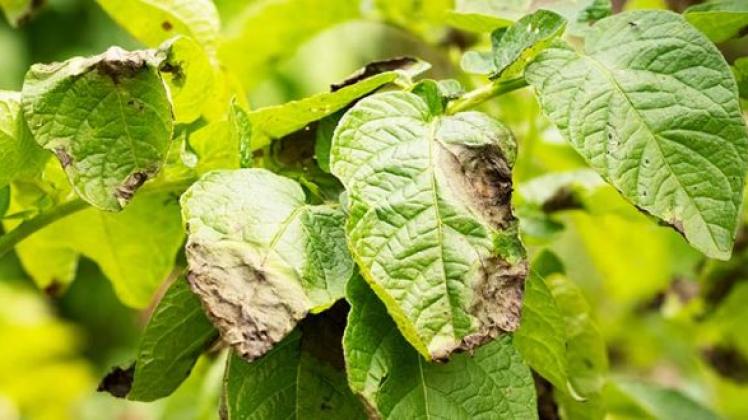Indonesia: Researchers map late blight strains in indonesia.
A new study published in Plant Pathology identifies for the first time the genotypes of P. infestans, causing late blight in the main potato-growing regions in Java, Indonesia.

The new study also examines the diversity in the genetic makeup in the P. infestans populations in those regions.
“Researchers are using breeding technologies to develop solutions that provide resistance to P. infestans. So, understanding the genotypes and genotypic diversity of the pathogen and how they evolve is key to achieving lasting, durable resistance to the disease,” notes Dr. Phillip Wharton, associate professor in the College of Agriculture and Life Sciences at the University of Idaho and lead author of the publication.
U.S. researchers from the University of Idaho, University of Minnesota, and Michigan State University collaborated with colleagues from the Indonesian Center for Agricultural Biotechnology and Genetic Resources Research and Development (ICABIOGRAD) to collect and study P. infestans samples over a four-year span (2016-19) from 15 locations in nine regencies on Java, Indonesia. Microsatellite analysis revealed that late blight outbreaks in these regencies were caused by EU_2_A1, a European genotype, and other genotypes that are closely related to EU_2_A1 but unique to Indonesia.
These results suggest that the original genotype introduced in Indonesia was probably EU_2_A1 and that there is an ongoing evolution in these populations due to a high mutation rate and no selection pressure from the susceptible potato hosts that are currently being grown in Indonesia.
The research team is part of the Feed the Future Biotechnology Potato Partnership (BPP). Led by Michigan State University, the project aims to bring genetically engineered late blight resistant potato to smallholder farmers in Bangladesh and Indonesia.
In this project, three genes from wild potato species that are known to provide natural resistance to late blight disease are inserted varieties preferred by both farmers and consumers. The result is a potato variety that has durable disease protection.
Benefits of the late blight resistant potato include reduction in exposure to chemical fungicides, but may also lead to less post-harvest loss and increased yield. Early results of confined field trials with three gene late blight resistant potatoes in Indonesia appear to show that there is a correlation between absence of the disease and greater yields.
“Although a lot more research needs to be done, early indication is that a late blight resistant potato could also benefit a growing population with higher crop output,” says Wharton. With global population projected to exceed nine billion by 2050, this is very positive news.”
Fuente: https://www.potatobusiness.com/agro-news/researchers-map-late-blight-strains-in-indonesia/




